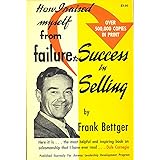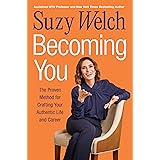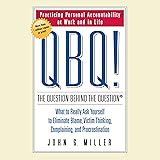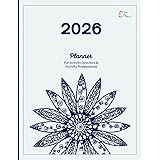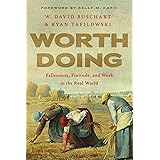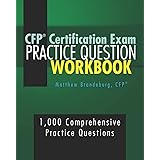Landing a coveted role in investment banking, particularly positions offering upwards of $150,000 annually and a path to significant wealth, fundamentally hinges on adept strategic networking. This process, as highlighted in the accompanying video, is not merely about sending out numerous applications; it is about cultivating authentic, impactful professional relationships. A disciplined approach to investment banking networking is not merely advantageous but is often the decisive factor separating successful candidates from those whose applications are lost within the digital void.
The highly competitive landscape of Wall Street recruitment necessitates a methodical and personalized strategy, especially when targeting top-tier firms like J.P. Morgan, Goldman Sachs, or Morgan Stanley. Effective networking extends beyond merely exchanging contact information; it encompasses meticulous research, thoughtful engagement, and sustained relationship management. By mastering these critical steps, aspiring bankers are positioned to transform casual acquaintances into powerful advocates who can open doors to interviews and ultimately, job offers.
The Foundation: Crafting Your Master Networking List
The initial phase of any successful investment banking networking endeavor involves systematically compiling a comprehensive list of target contacts. This organized approach prevents haphazard outreach and ensures that efforts are strategically directed towards individuals most likely to provide valuable insights or connections. Establishing a robust networking tracker is paramount, allowing for efficient management of contacts and follow-ups throughout the recruitment cycle. This process is often underestimated by candidates, yet its foundational importance cannot be overstated in the pursuit of securing a position in financial services.
Prioritizing Your Outreach: The Hot-to-Cold Strategy
A crucial methodology in building this master list involves prioritizing outreach from “hot” leads to “cold” contacts. This systematic progression maximizes the likelihood of initial engagement and builds momentum within one’s network. The hottest leads invariably include friends, family, and direct acquaintances, individuals who possess an inherent willingness to assist and vouch for one’s character and capabilities. Their established trust forms a vital bridge to new connections, often circumventing the initial barriers associated with cold outreach.
Following this immediate circle, the focus shifts to alumni from one’s educational institutions, especially those affiliated with shared clubs or organizations. These individuals often exhibit a strong sense of camaraderie and a propensity to support fellow alums, recognizing the value of paying it forward within the institutional network. Only after these warm leads have been thoroughly exhausted should strategic cold outreach be initiated, focusing initially on individuals with whom commonalities exist, such as shared ethnicity, past internships, or geographical connections. These subtle similarities provide a natural conversation starter, making the initial connection feel less transactional and more organic, ultimately increasing the probability of a positive response.
The final tier, often termed “spraying and praying,” involves broader cold outreach, though even this should be executed with a degree of discernment rather than indiscriminate messaging. Tools like LinkedIn Sales Navigator or Findymail are frequently employed to efficiently source email addresses, ensuring that direct lines of communication can be established. For those seeking free alternatives, a quick online search for “firm name email format” often reveals common patterns, enabling candidates to deduce contact information for individuals within target organizations. This tiered approach is a hallmark of sophisticated investment banking networking, ensuring that limited time and resources are allocated optimally.
Leveraging Tools for Efficient Contact Management
Effective management of an expanding network requires sophisticated tools to track interactions and facilitate follow-up. Dex, for instance, aggregates contacts from various platforms—LinkedIn, phone, email—into a centralized database, offering powerful search and categorization functionalities. This allows for precise filtering, enabling candidates to quickly identify individuals at specific banks like Goldman Sachs or Morgan Stanley, or within particular geographic regions. Such organizational capabilities are indispensable during intensive recruiting periods, ensuring no potential lead is overlooked or mishandled.
The Dex plugin further enhances productivity by allowing direct integration with LinkedIn, enabling users to add contacts, set reminders for future outreach, and group individuals for targeted communication. Its AI feature, generating personalized LinkedIn messages, significantly streamlines the initial contact process, saving valuable time for candidates operating within tight schedules. Utilizing these technological aids transforms the often-daunting task of networking into a more manageable and strategically executable process, allowing for a higher volume of personalized interactions.
Mastering the Outreach: Making Every Message Count
Once a target list is established, the critical next step involves crafting outreach messages that resonate with busy banking professionals. This is an area where many candidates falter, frequently sending generic communications that are immediately discarded. Given that professionals at leading banks often receive hundreds of similar requests weekly, a highly personalized and concise message is not merely a courtesy but a prerequisite for securing attention. The standard 80 to 100+ hour work weeks of bankers mean that their time is an exceedingly precious commodity, dictating that outreach must be impactful from the outset.
Personalization as a Prerequisite
Thorough research on each individual contact is non-negotiable, involving a careful review of their LinkedIn profile and any publicly available information. The outreach message itself must reference something specific from their background—a shared alma mater, a particular deal they worked on, a unique career trajectory, or a common interest. This demonstrates a genuine interest in the individual rather than a perfunctory attempt at connection, signaling to the banker that the sender has invested time and effort. Such personalization differentiates a candidate from the majority, whose generic “spray and pray” messages often meet an immediate digital demise. It is understood that a compelling, tailored message significantly increases the probability of eliciting a positive response and initiating a productive dialogue.
Brevity and Respect: The Art of the Initial Ask
Messages must be kept exceedingly short, concise, and respectful, typically limited to five to seven sentences. This brevity respects the banker’s time and encourages them to read the entire message without feeling overwhelmed. Furthermore, the initial request should be modest: a 15-minute introductory chat. While many conversations may naturally extend to 30 minutes if rapport is established, starting with a shorter, less demanding request significantly lowers the barrier to entry for a busy professional. It is also advised that a banker-friendly resume be attached for immediate reference, signaling preparedness and allowing the recipient to quickly assess the candidate’s qualifications without an additional request. A strategically formatted resume, as discussed in other resources, is critical for making a strong first impression.
The Underrated Power of the Confirmation Email
An often-overlooked yet critical component of professional engagement is the confirmation email sent the day before a scheduled call. This small but significant gesture serves multiple purposes, underscoring its importance in the investment banking recruiting process. Primarily, it acts as a timely reminder for the banker, whose demanding schedule can easily lead to forgotten appointments, thereby preventing wasted time for both parties. Such a proactive measure demonstrates the candidate’s organizational skills and commitment, subtly reinforcing a positive professional image. This “game of inches” approach to recruiting implies that every minute impression contributes to the overall perception of a candidate. When a call is scheduled more than two days in advance, sending this confirmation becomes an essential protocol.
Engaging in Meaningful Dialogue: Beyond the Q&A
The actual networking conversation represents the crux of the relationship-building process, yet it is where many candidates make critical errors that can jeopardize their prospects. The primary objective of these interactions is not to conduct a rigid Q&A session, particularly avoiding questions easily answerable through online research. Bankers, working an arduous 80 to 100-hour week, value their limited free time immensely; they are unlikely to be impressed by rote inquiries. Instead, the focus must shift to establishing genuine rapport and leaving the impression that one would be a collegial and enjoyable teammate, even during late nights turning comments on a pitchbook.
Shifting Focus: Building Personal Rapport
A somewhat counter-intuitive but highly effective strategy involves dedicating a substantial portion of the conversation, approximately 50 to 80%, to personal topics rather than strictly professional ones. This means actively seeking to understand the banker as an individual, exploring shared interests, hobbies, or recent life events. Commencing the conversation with a casual inquiry about their weekend or a trending news story can effectively break the ice and set a more relaxed tone. Such an approach enables a deeper connection to be formed, moving beyond the superficiality often associated with transactional networking. Instances of discussing tennis for 15 minutes, basketball for an entire chat, or even family life for half the call illustrate the profound impact of connecting on a human level, as these are the interactions that leave a lasting, positive impression.
The Art of the Follow-Up Question
Successful conversations are fundamentally driven by the skillful deployment of follow-up questions, creating a layered dialogue that naturally unfolds. Rather than jumping between disparate topics, a good conversationalist builds upon the banker’s responses, delving deeper into areas of mutual interest. For example, if a banker mentions attending Duke and playing basketball, follow-up questions could progressively explore their interest in the NBA playoffs, their favorite team, and how they manage to integrate their passion for sports into a demanding banking schedule. This organic progression not only maintains engagement but can also lead to invaluable insights into the group’s culture or work-life dynamics, all within the context of a comfortable, personal exchange. These types of dialogues are far more effective than attempting to impress with complex, generic questions about macroeconomic trends or deal flow.
Avoiding Common Interview Pitfalls
It is imperative to steer clear of formulaic questions such as “What is your favorite deal?” or inquiries about the impact of tariffs or interest rates on deal flow, especially if these topics can be readily researched online. Such questions signal a lack of originality and a failure to appreciate the banker’s time. The goal is to facilitate a natural conversation where insights into the bank and group culture emerge organically, rather than through a checklist of pre-prepared queries. When these types of genuine conversations are successfully cultivated, subsequent requests for referrals to other bankers within the firm are met with prompt and enthusiastic responses, signifying the successful establishment of a credible connection within the organization. This foundational step is critical for developing a strong internal network that can significantly bolster one’s candidacy.
Cultivating Sustained Relationships: Post-Meeting Protocol
The networking process does not conclude with the initial conversation; rather, it transitions into a phase of deliberate follow-up and relationship nurturing. These post-meeting interactions are essential for reinforcing positive impressions and keeping communication channels open for future opportunities within the highly competitive investment banking sector. A strategic approach to post-meeting protocol significantly enhances the long-term efficacy of initial outreach efforts, ensuring that connections are not merely transient but become enduring professional assets. The proper execution of these steps can be as impactful as the initial conversation itself.
The Strategic Thank You Email
A thank you email, dispatched within 24 hours of the conversation—either later that night or the following morning—is a non-negotiable component of professional etiquette. This concise message, typically a few sentences, should reference specific points of discussion that were particularly enjoyable or insightful, demonstrating active listening and genuine appreciation for the banker’s time. Crucially, if the conversation has progressed positively and rapport has been established, the thank you email presents a prime opportunity to respectfully request a referral to another banker within the firm. A successful referral indicates strong progress in building an internal reputation at the bank and signals that the candidate is effectively navigating the networking pipeline, moving closer to securing an interview.
Long-Term Engagement: Staying on Their Radar
Beyond the immediate follow-up, maintaining periodic contact with bankers who have provided assistance or mentorship is a strategic imperative for long-term career development. Even if an initial recruitment cycle does not yield an offer, keeping bankers updated on one’s progress, such as securing other interviews or advancing to a Super Day, reinforces the relationship. These updates, even if brief, can sometimes elicit valuable tips or insights from the banker. Furthermore, staying in touch ensures that the door remains open for future recruiting cycles, especially if one gains additional experience at another institution. Bankers often appreciate candidates who demonstrate persistence and a commitment to their career path, understanding that professional journeys can evolve. This continuous engagement is a hallmark of sophisticated investment banking networking, transforming isolated interactions into a robust and enduring professional network.


